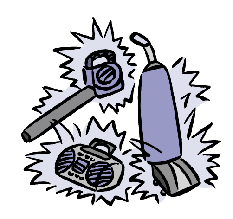
- Capital City:
- Des Moines
- Nickname:
- Hawkeye State / Corn State
- Motto:
- Our liberties we prize and our rights we will maintain.
- Statehood:
- December 28, 1846 (29th)
- Origin of State's Name:
- From the Dakota Indian word "Ayuhwa," meaning "sleepy ones," referring to a tribe living in that area
- Largest Cities:
- Des Moines, Cedar Rapids, Davenport, Sioux City, Waterloo
- Border States:
- Illinois, Minnesota, Missouri, Nebraska, South Dakota, Wisconsin
- Land Area:
- 55,875 sq. mi.; 23rdlargest
- State Bird:
- Eastern Goldfinch
- State Flower:
- Wild Prairie Rose (rosa pratincola)
- State Tree:
- Oak (quercus)
- State Song:
- The Song of Iowa
Although it is sometimes called the "Corn State," Iowa really is a breadbasket for the U.S., with 90 percent of its land devoted to farming. The main products are corn and hogs. Named for the Iowa River, which was named for the Iowa, or Ioway, Indians, Iowa joined the Union in 1846 as the 29th state. The wild rose is the state flower and the capital is Des Moines.
Glenn Miller Festival
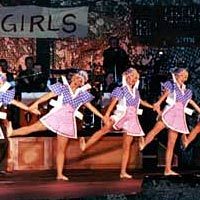
This annual celebration of the noted composer and band conductor is held in his birthplace, Clarinda, Iowa. Beginning as a modest observance in 1976, the festival is now international in scope, with groups from Japan, Austria, and the Netherlands slated to perform in June 2000. The Airmen of Note and the Strolling Strings of the US Air Force Band are regularly featured, and bands from around the country seeking to recreate the "Glenn Miller sound" perform to enthusiastic audiences. A significant aspect of the festival is the Glenn Miller Scholarship Competition. The festival is documented in historical text, photographs, publications, a videotape of the 1998 festival, and issues of Miller Notes, the newsletter of the Glenn Miller Birthplace Society.
Iowa State Fair
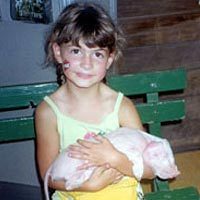
Each August, people from every corner of the state of Iowa flock to Des Moines for this annual celebration. The internationally known Iowa State Fair is the state's largest event and one of the largest agricultural and industrial expositions in the United States. Attracting nearly one million visitors each year, the Iowa State Fair is extremely popular in the Midwest for its wide variety of activities. It is a proud tradition of the state, and serves as a vehicle for tourism, economic development, education, entertainment and culture.
The fair's primary purse is to celebrate Iowa's livelihood. It provides a place for farmers to meet and discuss innovations, equipment, and successes. The fair is home to one of the world's largest livestock shows, including exhibitions of dairy and beef cattle, sheep, hogs, horses and poultry.
It also offers diversity, where attendees may showcase cooking skills or compete in a talent show. In its cultural center, it hosts the state's largest arts show, from photography to sculpture to painting. Grandstand acts have ranged from the Carpenters to Barbara Mandrell to Alan Jackson to the Goo Goo Dolls.
Since Iowa State Fair began in 1854, its remains a place for Iowans to communicate innovation and methodology. New exhibitions and attractions are added each year. Among historic highlights have been the display of the Wright Brothers' biplanes in 1911 and a visit by Charles Lindbergh in 1927. During election years, political candidates are quite visible, and several United States presidents have visited. In 1986, the Iowa State Fair was placed on the National Register of Historic Places for its facilities-most pre-date World War I-that are distinguished for large scale, specialized utilization building design.
National Balloon Classic
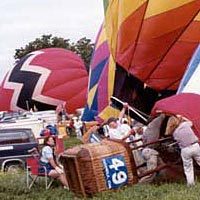
Held each August in Indianola, Iowa, this hot-air balloon competition is host to nearly 100 balloon pilots and more than 75,000 spectators annually.
Designated the North Central Regional Championship, it originated in 1970 as the first US National Championship. The event is documented in large-format color photographs, background text, and promotional publications. An official souvenir T-shirt and pin are also included.
RAGBRAI
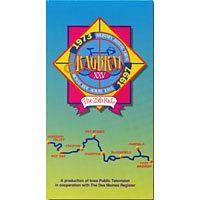
The seed for the Register Annual Great Bike Ride Across Iowa (RAGBRAI), sponsored by The Des Moines Register, began as an inspiration of touring cyclists John Karras and his childhood friend Donald Kaul who wanted to recapture the spirit of adventure by riding their 10-speed bikes across the state. Their one-day ride from Des Moines to Iowa City in 1971 -- a distance 125 miles -- convinced them such a ride might be possible.
Sponsored by the Iowa Register and accompanied by 250 riders, in August 1973 they began in Des Moines and finished in Davenport with 115 riders six days later. The star of that first ride was Clarence Pickard of Indianola, a retired farmer, county agent, assistant Dean of Iowa State College, and Peace Corps recruit, who happened to be 83 years old! His success encouraged hordes of other riders, so that over 2,000 signed up to ride the next year. The number of cyclists has grown ever since -- from 2,000 in 1974 to around 6,000 in 1978, topping out at 10,000 a year after 1985.
Karras notes: "On the whole, the ride continues to go well, thanks to the organizing skills of Jim Green [RAGBRAI Coordinator], the cooperation of every level of government (especially the Iowa State Patrol), the incredibly generous hospitality of Iowans and the state's splendid secondary road system that allows us to put upward of 10,000 bikes on the road from one border to the other every year in the last full week of July."
 Print
Print Email
Email






